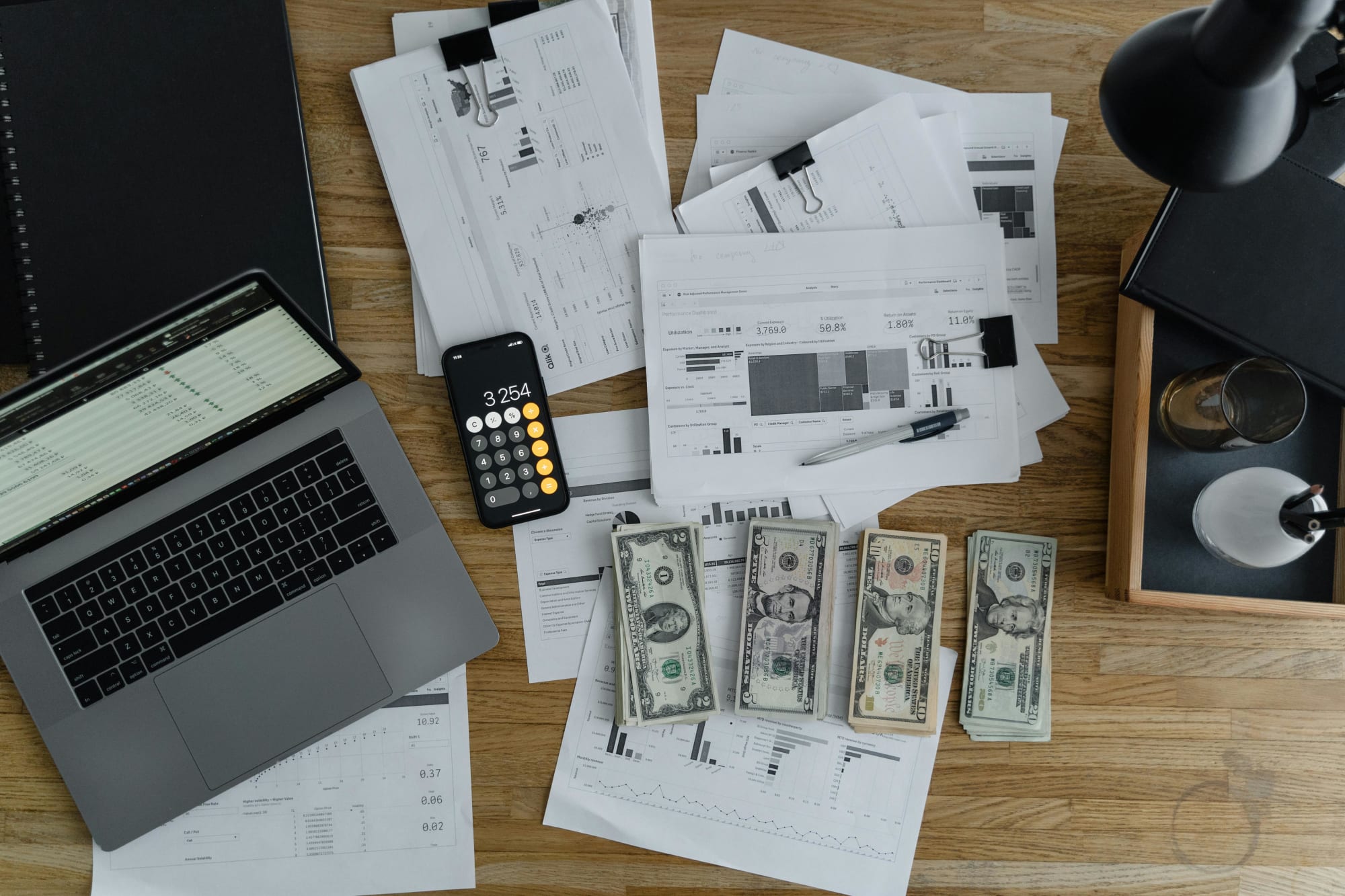Borrow
Secured vs. unsecured personal loans: Which is right for you?
When considering a personal loan in Australia, one of the first decisions you'll face is whether to opt for a secured or an unsecured loan. Each type has distinct advantages and drawbacks, and the right choice depends on your specific financial situation and borrowing needs. This article breaks down the differences between secured and unsecured personal loans, helping you decide which is more appropriate for your circumstances.
Secured vs. unsecured personal loans: Which is right for you?
When considering a personal loan in Australia, one of the first decisions you'll face is whether to opt for a secured or an unsecured loan. Each type has distinct advantages and drawbacks, and the right choice depends on your specific financial situation and borrowing needs. This article breaks down the differences between secured and unsecured personal loans, helping you decide which is more appropriate for your circumstances.

What is a secured personal loan?
A secured personal loan is backed by collateral, such as a car, property, or other valuable assets. The lender holds the right to seize the asset if the borrower fails to repay the loan according to the agreed terms. Because these loans are less risky for lenders, they often come with lower interest rates, higher borrowing limits, and longer repayment terms.
Benefits of secured loans
- Lower interest rates: The presence of collateral reduces the risk for lenders, typically resulting in lower interest rates compared to unsecured loans.
- Higher loan amounts: Secured loans often allow you to borrow more money, as the loan amount usually depends on the value of the collateral.
- Longer repayment periods: Lenders are generally more flexible with loan terms, offering longer periods to spread out repayments, which can make monthly installments more manageable.
What is an unsecured personal loan?
Unsecured personal loans do not require any collateral. They are given based on the borrower’s creditworthiness and typically come with stricter eligibility requirements. These loans are riskier for lenders and generally feature higher interest rates and smaller loan amounts than secured loans.
Benefits of unsecured loans
- No collateral required: Borrowers don’t risk losing a valuable asset if they default on the loan.
- Simpler application process: Without the need to evaluate collateral, the loan approval process can be quicker and less complicated.
- Flexible for various uses: Unsecured loans can be used for a variety of purposes, from consolidating debt to funding a holiday.

Choosing between secured and unsecured loans
Consider your financial stability: If you have stable finances and are comfortable with pledging an asset, a secured loan might be a good choice due to the lower interest rates and larger loan amounts. However, if you prefer not to risk an asset or don’t own any significant assets, an unsecured loan might be the better option.
Assess your borrowing needs: For larger amounts, perhaps for major home renovations or buying a high-value asset, a secured loan is usually more appropriate. For smaller, short-term financial needs or expenses like travel or minor home improvements, an unsecured loan might suffice.
Evaluate interest rates and terms: Compare the interest rates and terms offered by different lenders for both secured and unsecured loans. Factor in the total cost of borrowing, including any fees and charges, to see which option is more cost-effective over the long term.
Risks and considerations
- Risk to assets: With secured loans, failing to make repayments could result in the loss of your collateral.
- Credit impact: Defaulting on either type of loan can negatively impact your credit score, affecting your ability to borrow in the future.
- Financial overstretch: Borrow only what you need and can afford to repay to avoid financial strain.
Conclusion
Whether a secured or unsecured personal loan is right for you largely depends on your financial situation, your needs, and your comfort level with risking collateral. It is crucial to carefully consider your options and make an informed decision based on a thorough assessment of your circumstances and the loan terms available.
---
By understanding the nuances between secured and unsecured personal loans, you can better navigate the lending environment in Australia and choose a loan that aligns with your financial goals and capabilities.

Loans
Fixing the future: How brokers and lenders can turn rate-hike anxiety into strategic advantage
Australian borrowers are leaning into short-term fixed loans as rate uncertainty lingers, shifting risk from households to lenders and their funding partners. That creates a narrow window for broker ...Read more

Loans
Mortgage mania: Why sluggish turnaround times are the new battleground in booming loan demand
Brokers across Australia are flagging loan processing delays precisely as borrower activity rebounds — a dangerous mismatch for lenders competing on service as much as price. The operational lesson is ...Read more

Loans
Why AI isn't penning Aussie mortgages yet trust trumps tech
Australian borrowers remain wary of AI taking the wheel on home loans, even as brokers and lenders quietly increase behind-the-scenes adoption. The trust gap is the core blocker — and it’s solvable. ...Read more

Loans
Underserved by design: A case study in turning FBAA broker density gaps into growth
Fresh FBAA data confirms broker headcount is rising past 22,000, yet coverage remains uneven — with concentrations in NSW and Victoria and pockets the association identifies as underservedRead more

Loans
The new shadow lender: How the ‘Bank of Mum and Dad’ is redrawing Australia’s first-home buyer market
Parental capital has become a decisive force in Australia’s housing market, accelerating deposits, lifting bidding power and creating a two‑speed pipeline of first‑home buyers. This isn’t a feel‑good ...Read more

Loans
The effortless edge: How Australian brokers turn retention into a compounding growth engine with AI and specialisation
Australia’s broking market is crowded, digital-first and unforgiving on acquisition costs. The growth story now is retention—engineered through low-effort client experiences, AI-enabled servicing and ...Read more

Loans
State Street: RBA holds rates at 3.6% as hawkish tone emerges
State Street has said the Reserve Bank of Australia’s (RBA) decision to hold the cash rate at 3.6 per cent reflects a more hawkish policy bias, signalling that the central bank is likely to keep rates ...Read more

Loans
The effortless edge: How brokers turn low-friction service into high-retention value
Client retention in broking is no longer about squeezing a better rate at renewal. It’s about building an ‘effortless’ experience that anticipates needs, removes friction, and compounds loyalty across ...Read more

Loans
Fixing the future: How brokers and lenders can turn rate-hike anxiety into strategic advantage
Australian borrowers are leaning into short-term fixed loans as rate uncertainty lingers, shifting risk from households to lenders and their funding partners. That creates a narrow window for broker ...Read more

Loans
Mortgage mania: Why sluggish turnaround times are the new battleground in booming loan demand
Brokers across Australia are flagging loan processing delays precisely as borrower activity rebounds — a dangerous mismatch for lenders competing on service as much as price. The operational lesson is ...Read more

Loans
Why AI isn't penning Aussie mortgages yet trust trumps tech
Australian borrowers remain wary of AI taking the wheel on home loans, even as brokers and lenders quietly increase behind-the-scenes adoption. The trust gap is the core blocker — and it’s solvable. ...Read more

Loans
Underserved by design: A case study in turning FBAA broker density gaps into growth
Fresh FBAA data confirms broker headcount is rising past 22,000, yet coverage remains uneven — with concentrations in NSW and Victoria and pockets the association identifies as underservedRead more

Loans
The new shadow lender: How the ‘Bank of Mum and Dad’ is redrawing Australia’s first-home buyer market
Parental capital has become a decisive force in Australia’s housing market, accelerating deposits, lifting bidding power and creating a two‑speed pipeline of first‑home buyers. This isn’t a feel‑good ...Read more

Loans
The effortless edge: How Australian brokers turn retention into a compounding growth engine with AI and specialisation
Australia’s broking market is crowded, digital-first and unforgiving on acquisition costs. The growth story now is retention—engineered through low-effort client experiences, AI-enabled servicing and ...Read more

Loans
State Street: RBA holds rates at 3.6% as hawkish tone emerges
State Street has said the Reserve Bank of Australia’s (RBA) decision to hold the cash rate at 3.6 per cent reflects a more hawkish policy bias, signalling that the central bank is likely to keep rates ...Read more

Loans
The effortless edge: How brokers turn low-friction service into high-retention value
Client retention in broking is no longer about squeezing a better rate at renewal. It’s about building an ‘effortless’ experience that anticipates needs, removes friction, and compounds loyalty across ...Read more








